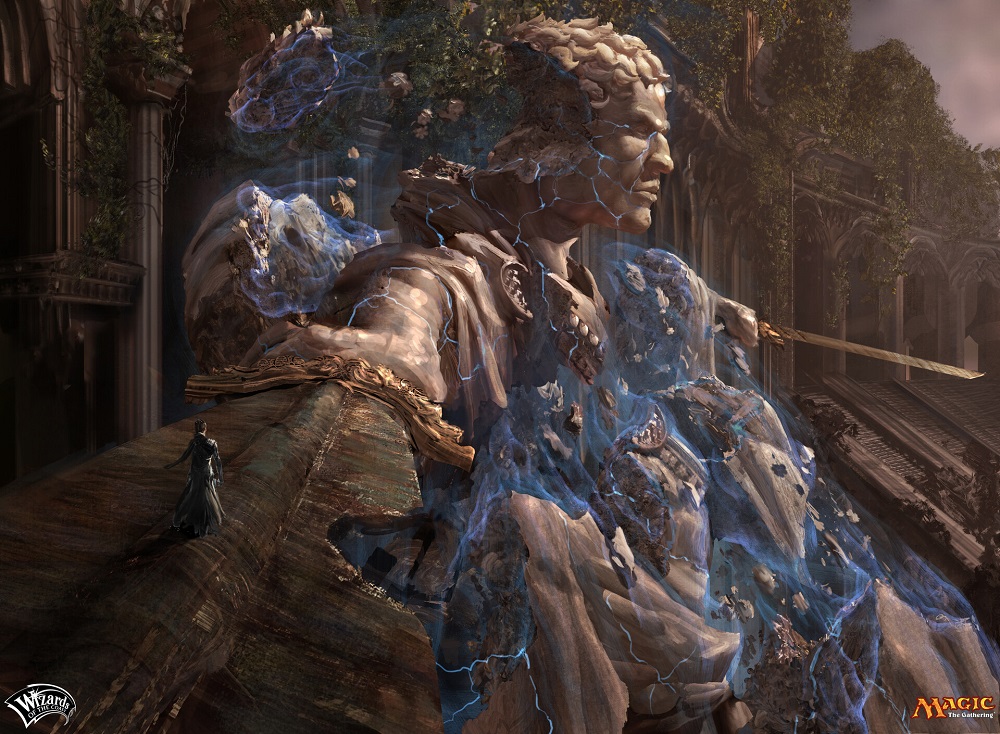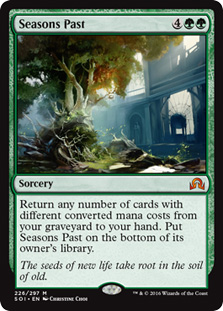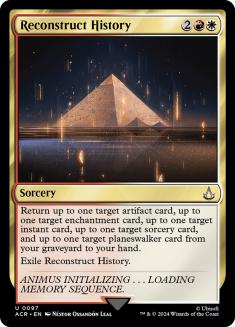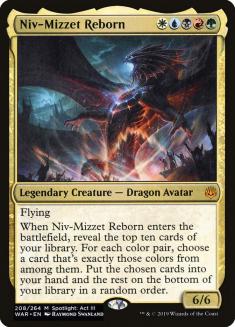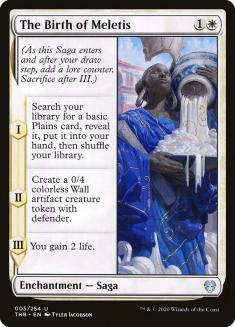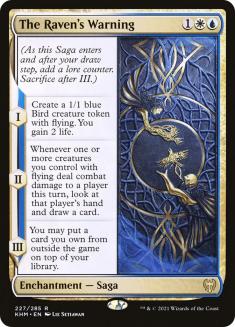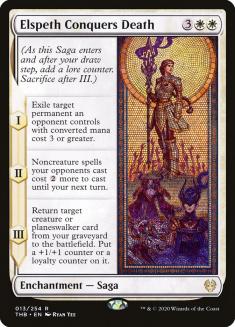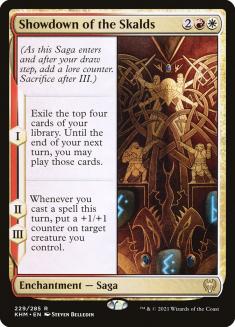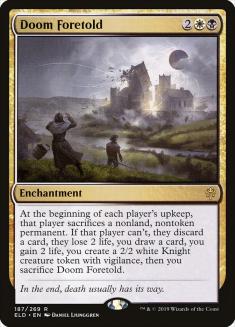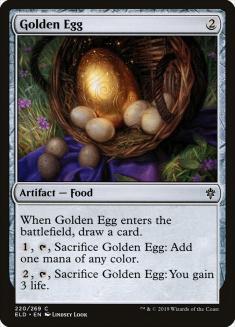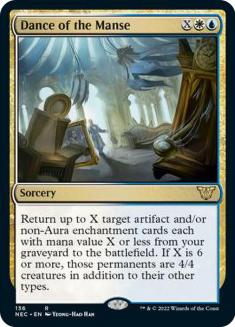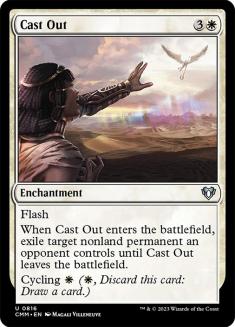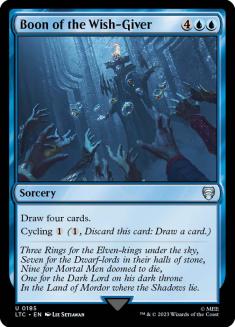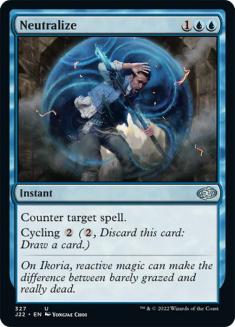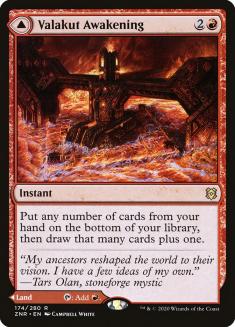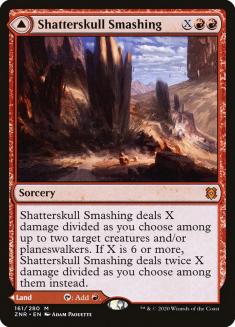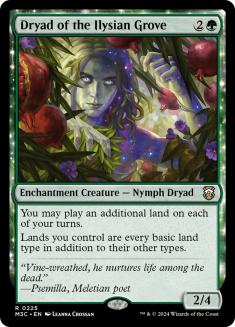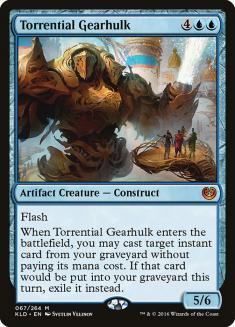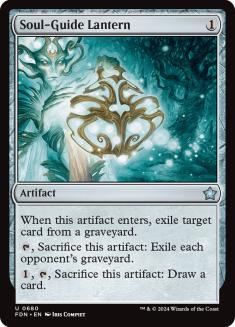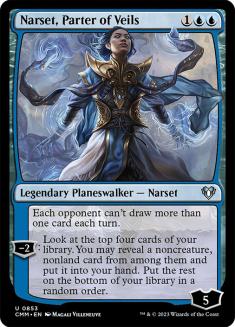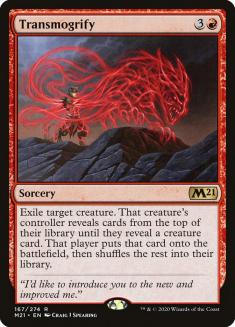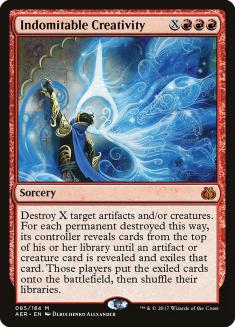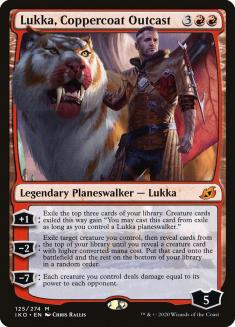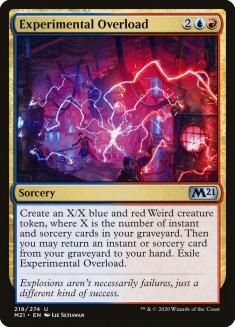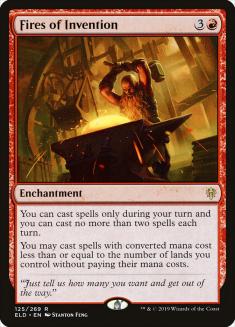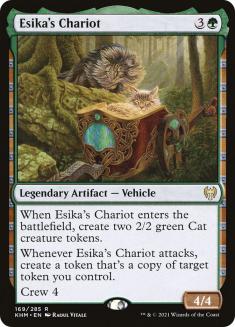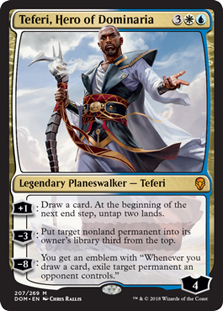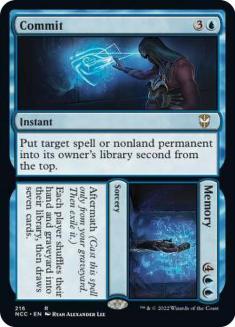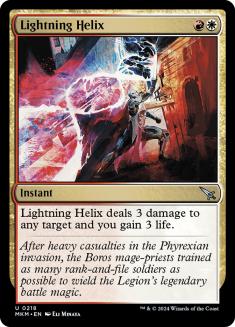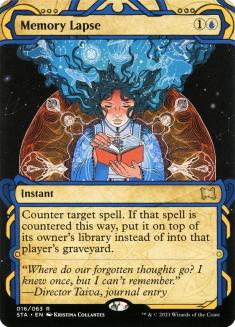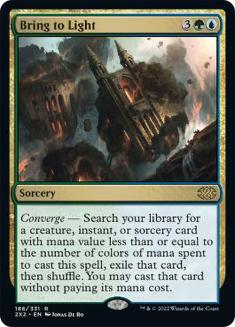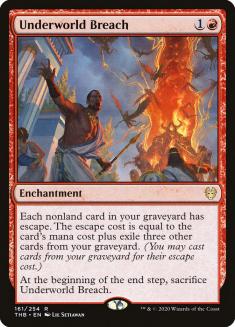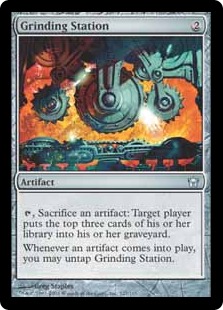There are some reliable ways to grab players’ attention as a designer. You can break boundaries and do something we’ve never seen before or you can print something that calls back to an old flame, inspiring a nostalgic quest to relive that glory.
The most exciting designs do both at once.
Golgari Control based around Seasons Past stole the hearts of many viewers at Pro Tour Shadows over Innistrad. The idea of a control deck with incredible end-game inevitability that didn’t have to risk its sole finisher being removed or play additional unwanted finishers was very attractive and had some precedent in Gaea’s Blessing and Elixir of Immortality.
It soon became clear the deck’s success was mainly due to Jon Finkel being at the helm. Some successors to that archetype featured Seasons Past but only as a one-of for Dark Petition or a sideboard hammer against other slow decks rather than a centerpiece.
Seasons Past’s internal contradictions stopped it from taking on a larger role. Spending six mana on a form of card advantage that doesn’t affect the battlefield requires an even stronger focus on cheap interaction to let you buy that time and unload your hand promptly after it resolves, but the mana curve necessary for that diminishes Seasons Past itself.
Reconstruct History is superficially similar but poses a different challenge at a much better cost. Six mana was a lot to pay for Seasons Past in its own Standard format and is completely unacceptable elsewhere; four mana is fine from Standard through Modern if the reward is good enough. Reconstruct History scales better with the size of the format, as a deeper card pool gives you more viable options for each card type and lets you maintain the bottom-heavy mana curve that’s increasingly important when the format gets faster.
This card doesn’t call out mana value explicitly but smuggles that constraint in anyway. Planeswalkers start at three mana in most formats and there’s a tradeoff between ensuring you’re returning high-impact spells and having cheap spells that chain into or after Reconstruct History.
There’s a familiar trap here…
Niv-Mizzet Reborn is an incredibly successful design, spawning decks named after it and built around it while asking tough questions about how exactly you want to do that. Five-Colour Niv-Mizzet decks across all formats are full of clunky cards that wouldn’t make the cut normally just to make up the numbers for an unloved colour pair and chase the dream of a Niv-Mizzet jackpot. Well-tuned lists cast Niv-Mizzet aiming for quality, not quantity.
Reconstruct History offers the same chance for self-sabotage. Part of the card’s appeal is that its likely homes already have a mix of card types among their most important cards, but it’s easy to be lured into adding unnecessary cards in the missing types to complete the roster. Seasons Past almost forced you to care about quantity as well — why bother casting a worse Restock, a card that nobody would play, unless you can sweeten the deal? — but four mana is a good price for two specific cards or three quasi-random cards. Why waste time looking for a marginal artifact or enchantment as a fifth card?
Going through the options by card type for each format would get me to the million-word milestone by itself but I expect certain clusters of cards to show up across the board and some cards have earned their reputation as multi-format staples.
Getting an enchantment in the graveyard would have been the hardest condition to meet for Reconstruct History a few years ago but the Historic theme in Dominaria brought a marvellous gift in Sagas, a recurring hit in recent Standard sets. The Birth of Meletis can unfold every chapter and sacrifice itself by the first time you could cast Reconstruct History on Turn 4 but the most playable Sagas are all conducive to the kind of longer game Reconstruct History shines in and The Raven’s Warning lets you find it consistently there without needing to draw useless copies early.
Elspeth Conquers Death is not the format-defining card it once was and is now upstaged by a flashier, younger model in Binding the Old Gods, but when these effects are good, drawing more copies is all you want to do and Reconstruct History enables that.
Showdown of the Skalds is one of the best cards in Standard, in the exact right colours, and can help to find Reconstruct History to chain into a second Showdown. Unfortunately, the deckbuilding demands they each make of you don’t overlap much. Showdown wants you to have creatures on the battlefield so you can apply pressure while gaining card advantage, overwhelming the opponent on two axes at once, but it’s hard to do this while having a wide and deep spread of card types for Reconstruct History — especially as the Adventure creatures that pair so well with Showdown aren’t eligible targets. Once you have set up a successful Showdown, you would rather have a way to press that advantage immediately than a way to amass even more cards eventually.
The Doom Foretold decks are in the market for a less expensive Dance of the Manse and Reconstruct History is a promising candidate. Doom Foretold itself prolongs the game and leads to a mutual trade of resources, setting up a fatal follow-up copy via a Reconstruct History that’s also getting back fodder like Golden Egg. The biggest obstacle is needing red mana but the combination of Pathways, Triomes, and Fabled Passage along with the fixing conveniently offered by Egg make that a minor concern.
Shark Typhoon is an automatic consideration for any blue deck that can support it and the perfect target for Reconstruct History in both fair and unfair contexts. Typhoon is as flexible as a card can be, reducing the need for more narrow or expensive finishers, but control decks built to rely on Typhoon to end the game will be reluctant to cycle it early and have to sacrifice some of that flexibility. Knowing that you have Reconstruct History lets you use Typhoon however you want.
And, if you hardcast Typhoon, Reconstruct History should come with a tornado warning…
Cycling lets you stock your graveyard for Reconstruct History and dig deeper without needing to find a window to line up your spell correctly in advance. Reconstruct History fits perfectly into this play pattern — in the early-game, you just want to avoid being stranded with expensive or reactive cards, but when you have breathing room to cast Reconstruct History you want to return high-impact cards and will gladly cast a Neutralize or Boon of the Wish-Giver for its sticker price.
The cycling cost matters a lot here. If you’re spending three mana to cycle Sweltering Suns so that you can buy it back and spend another three mana to cycle it later, that’s a lot of time and mana for little gain.
The Cycling archetype might seem like a good home, as Reconstruct History can return Zenith Flare as well as a range of cyclers (including an enchantment in Footfall Crater), but the need for cheap payoff creatures makes it hard to find room. I could see Reconstruct History being a fine replacement for Teferi, Master of Time or a three-drop in the lists that go bigger.
The Zendikar Rising DFCs add to the relevant spell count while keeping your land count high in these inevitably mana-hungry decks. I continue to be impressed by the pair of Valakut Awakening and Silundi Vision in control or combo-control decks that are keen to find a specific spell later. Reconstruct History is no exception.
The decks that want Reconstruct History are likely to be creature-light already and Reconstruct History pushes you further in that direction but there are several build-around creatures that also have a relevant card type.
Soul-Guide Lantern has a fine floor in these decks as a cheap artifact that sacrifices itself, filling the hardest square on Reconstruct History’s bingo card, but its other text gets more powerful when the format does. In Standard, it’s a go-to sideboard card against Cycling to neuter Zenith Flare, but in Historic it covers most of the nonsense unleashed by the Mystical Archive and it has some utility against Lurrus of the Dream-Den everywhere. Scrabbling Claws is a similar tool that offers a more evenly distributed form of graveyard hate in Historic upwards.
Narset, Parter of Veils is pivotal in blue mirrors in Historic and Pioneer and a fantastic glue card in this deck. It finds Reconstruct History itself as well as other cards you eventually want to return while also being a great Reconstruct History target. If Narset lives in a slower matchup, you’re probably far ahead; if Narset dies, all you want to do is cast another copy. When Narset wars are important, Reconstruct History gives you the tools to win that war while dodging their Narset’s static ability.
Their payoff creatures and play patterns may differ but decks based around Transmogrify and similar effects are floating around every format from Standard to Modern. A look at the structure of these decks shows that they are amazingly natural homes for Reconstruct History — you aren’t allowed to play many creatures; you have to generate Transmogrify targets via other card types (typically enchantments like The Birth of Meletis and Shark Typhoon; sorceries like Forbidden Friendship; or planeswalkers like Elspeth, Sun’s Nemesis); and you fill out the rest of the deck with cheap spells that help to find your combo pieces or extend the game. If the first Transmogrify attempt fails, Reconstruct History can pick up the Transmogrify, a token creator, and at least one other useful card to let you try again.
Creatures (3)
Planeswalkers (2)
Lands (21)
Spells (34)

This deck dropped off quickly after the early weeks of Zendikar Rising Standard but has picked up some new tools, and many decks have a surprisingly hard time beating Dream Trawler. The Raven’s Warning adds consistency to the Transmogrify plan while giving you access to defensive tools such as Negate against decks like Sultai Ramp (Yorion) that can outmuscle you; setting up Koma, Cosmos Serpent when Dream Trawler is a poor Transmogrify target; or letting you Reconstruct History to win that battle this time.
In Historic, aspiring Polymorphists can aim much higher:
This deck from Rivals member Zach Kiihne aims to cheat out Velomachus Lorehold with Transmogrify and Indomitable Creativity on Turn 4 and chain Time Warps with Velomachus triggers to take every turn after that.
Reconstruct History can serve the same role as Experimental Overload in these shells as a backup Velomachus hit that represents another Time Warp while also buying back every part of the combo in longer games against disruption. It doesn’t create a Transmogrify target but it can recur something that can (primarily Shark Typhoon but also another copy of Overload). Kiihne’s list isn’t ideally set up for Reconstruct but an approach that leans more into white easily could be.
Transmogrify was already the focus of one of the best decks in Pioneer:
Creatures (2)
Planeswalkers (5)
Lands (35)
Spells (38)

It doesn’t take much to break Fires of Invention but it unsurprisingly works well with Reconstruct History, letting you recur and recast an expensive spell in the same turn. If the opponent was able to contain Fires — usually necessary to stay in the game — Reconstruct History can bring it right back.
Previously a pure Jeskai deck, Four-Colour Fires (Yorion) now branches into green for Esika’s Chariot — an ideal source of Transmogrify targets that pairs perfectly with Yorion, Sky Nomad. An uncontested Chariot can run away with the game with no additional support; if it is contested, it’s a high-impact artifact for Reconstruct History.
So far, we have taken existing shells and made minor tweaks to accommodate Reconstruct History. What happens if we set out to build around it?
Planeswalkers (6)
Lands (23)
Spells (31)

This take on Jeskai Control (Kaheera) has Teferi, Hero of Dominaria and Shark Typhoon as its main threats, in common with most Historic control decks, but a late-game Reconstruct History can represent both of these at once as well as a pair of interactive spells and even a Mind Stone or Soul-Guide Lantern as a throw-in.
Commit is a versatile answer for both spells and permanents while Memory is a one-two punch with Narset (whose -2 ability can help to find its other half). As a split card, the whole can count as either an instant or a sorcery for the sake of Reconstruct History.
Giving up Kaheera, the Orphanguard opens up Torrential Gearhulk as a finisher that counts as an artifact for Reconstruct History and boosts Commit // Memory (you can cast Memory thanks to a weird rules quirk, allowing you to use Gearhulk to do this on the opponent’s end step and get the first opportunity to unload your hand or fire off Memory during their draw step if you have Narset, tagging the card they drew for the turn as well).
This is tempting as the deck picked up a pair of strong instants in the Mystical Archive:
Any control deck needs cheap removal and Lightning Helix gives the deck a valuable life buffer that lets it take a turn off to cast a Reconstruct History which brings back the same Helix and a whole lot more. With Selesnya Company, Gruul Aggro, Dimir Rogues (Lurrus), and Rakdos Arcanist (Lurrus) together making up a large share of the metagame, Lightning Helix is a compelling reason to be in Jeskai. Memory Lapse is an actual Counterspell against the main combo decks of the format and a helpful delaying tactic against everything else.
Both Helix and Lapse are ideal, immediate follow-ups to Teferi, Hero of Dominaria — a card that just needs to survive for that one turn to take over the game.
Jumping back to Modern, we find some unexpected homes for Reconstruct History:
Creatures (9)
Planeswalkers (8)
Lands (36)
Spells (27)

This larger take on the Five-Colour Control decks gaining momentum in Modern picks up Reconstruct History as a fine mid-game value play that can buy back your other Bring to Light targets in longer games or become one itself. Reconstruct History finally gets to pick up cheap, powerful planeswalkers in Wrenn and Six and Teferi, Time Raveler (notably, the +1 ability on Teferi, Time Raveler means that Reconstruct History can be cast on the opponent’s end step to return Teferi if it died that turn) as well as premium removal in Lightning Bolt, Path to Exile, or Kaya’s Guile and ramp spells like Explore and Farseek that get you there a turn sooner.
Dryad of the Ilysian Grove plus Bring to Light for Scapeshift could fairly be described as a Splinter Twin situation and Reconstruct History can buy back both halves along with Teferi as protection.
Creatures (7)
Planeswalkers (4)
Lands (20)
Spells (29)
- 3 Lightning Bolt
- 4 Serum Visions
- 3 Grinding Station
- 1 Aether Spellbomb
- 3 Opt
- 2 Engineered Explosives
- 4 Mishra's Bauble
- 1 Chromatic Star
- 2 Path to Exile
- 2 Mox Amber
- 4 Underworld Breach
Sideboard

The combo of Underworld Breach and Grinding Station has survived the banning of various important support cards but has remained on the fringes in part because of its overreliance on its namesakes. Without any cards that can double as Underworld Breach or any guaranteed ways to find a copy, a perfect draw can crumble to a Thoughtseize.
Reconstruct History rebuys Breach — and a few more cards as a consolation prize in case Breach is hit again — and lets Emry, Lurker of the Loch and Grinding Station act as ‘draw’ spells to dig for your all-important combo card. It doesn’t address the deck’s weakness to graveyard hate or some other forms of interaction, but if your opponents are showing up with Thoughtseize or Mana Leak, it’s exactly what you need.
In a set widely dismissed as weak for Constructed, Reconstruct History is a hidden gem that contains a rewarding deckbuilding puzzle. It can never be an automatic, flagship four-of but having access to just a copy or two can radically alter your end-game — something that should demand your opponent’s respect (and yours!).

